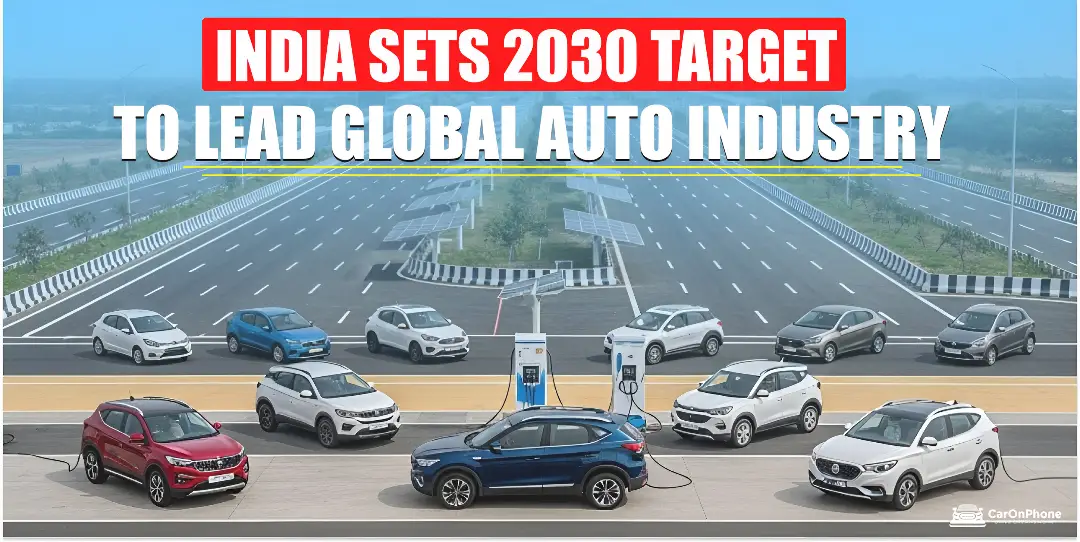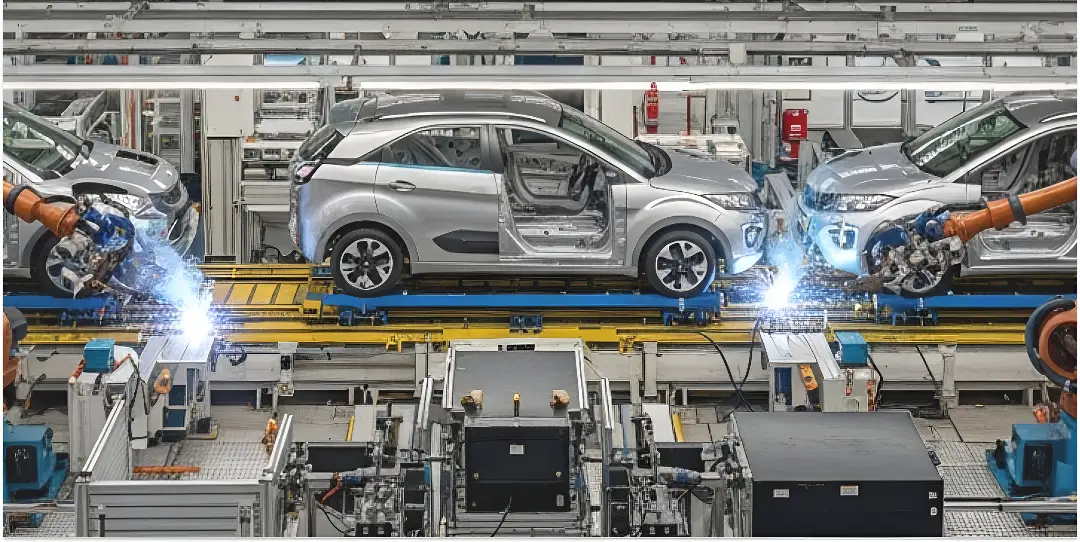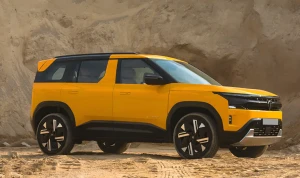India’s Global Ambition Statement (Aug 2025) Backed by Infrastructure Upgrades and Alternative Fuel Adoption
- India targets No.1 spot in global auto industry by 2030.
- Push driven by infrastructure upgrades and alternative fuels.

India aims to become the world’s No.1 automobile industry leader within the next 5 to 6 years. This goal is driven by major infrastructure improvements and a strong push for alternative fuels like ethanol, methanol, hydrogen and electric energy. India’s automotive sector is currently the third largest globally valued at ₹12 lakh crore contributing significantly to GST and employing about 4.5 crore people. The recent August 2025 announcement highlights a clear national strategy to propel this sector to the top rank through multi faceted efforts
Catch the latest launches and updates on CarOnPhone!Global Ambition Framework and Industry Goals
India’s roadmap aligns with the Automotive Mission Plan 2047 (AMP 2047) targeting a global leadership position in automotive manufacturing and exports by 2047. The key strategic pillars include infrastructure upgrades alternative fuels adoption and agriculture-energy linkage. Expansion and modernization of highways and logistics networks are being carried out to facilitate faster movement of goods and vehicles thereby strengthening the supply chain and export capabilities of the automotive sector. A strong focus has been placed on promoting biofuels like ethanol (with E20 blend already achieved by 2025), methanol, biodiesel, and clean fuels like compressed natural gas (CNG) liquefied natural gas (LNG), hydrogen, and electric vehicles (EVs). To create a strong agriculture-energy linkage, ethanol production from multiple grains and bamboo cultivation is being encouraged to support rural income and energy diversification. This approach also helps reduce import dependency on fossil fuels, which currently stands around 85%.
Industrial and Economic Impact
The transition to alternative fuels and clean technology is expected to lower vehicular pollution significantly, improving air quality. It will also boost rural economies by increasing the agricultural GDP share through biofuel-related crops, while creating millions of jobs by multiplying economic activities linked to biofuel production and automotive manufacturing. Another major outcome is the reduction of India’s import bill on fossil fuels, which burdens the national exchequer by approximately ₹22 lakh crore.
Automotive Industry Transformation

Several key changes are underway or planned in the automotive ecosystem. Enhanced R & D investment is being made in clean mobility technologies including EV batteries, fuel cells, hybrids and autonomous driving. Development of public EV charging networks and battery swapping infrastructure is also being carried out. In addition the adoption of flex fuel engines capable of running efficiently on ethanol blends is being prioritised alongside the use of biofuels in commercial transport sectors with methanol and biodiesel for heavy duty vehicles. Pilot projects on hydrogen fuel cells and biofuels derived from municipal waste are also progressing with potential tie-ins to road construction.
Government Support and Policy Measures
The government’s role is critical, with multiple initiatives driving this transformation. The FAME (Faster Adoption and Manufacturing of Hybrid & Electric Vehicles) scheme, with a budget of ₹11,500 crore, is dedicated to demand incentives and infrastructure expansion. Policies have been designed to promote greater localization of component manufacturing and reduce imports, while incentives for startups and SMEs in automotive and clean fuel sectors aim to integrate them into global supply chains. Furthermore, funding support is being provided through AAA-rated infrastructure bonds, which have already proven successful in large highway projects.
Projected Outcomes and Timeline
India is currently the third largest automobile market globally ahead of Japan. If this roadmap is executed successfully especially through the adoption of alternative fuels India aims to overtake all competitors and become the global leader in the automobile industry by around 2030. Clean fuel adoption is already ahead of schedule with the achievement of 20% ethanol blending five years earlier than planned. Expansion of skilled workforce development is also underway, with plans to train over one crore skilled workers in future mobility technologies.
Tags:
CarOnPhone is your one-stop destination to see all upcoming cars, latest cars, released cars, and EV Cars, and compare Cars in all Car Brands. Stay tuned and follow us to update yourself on the automotive world.











